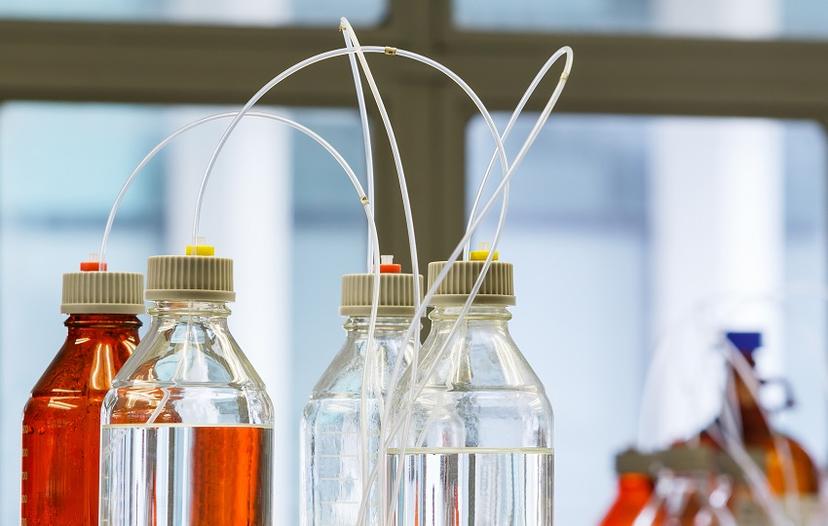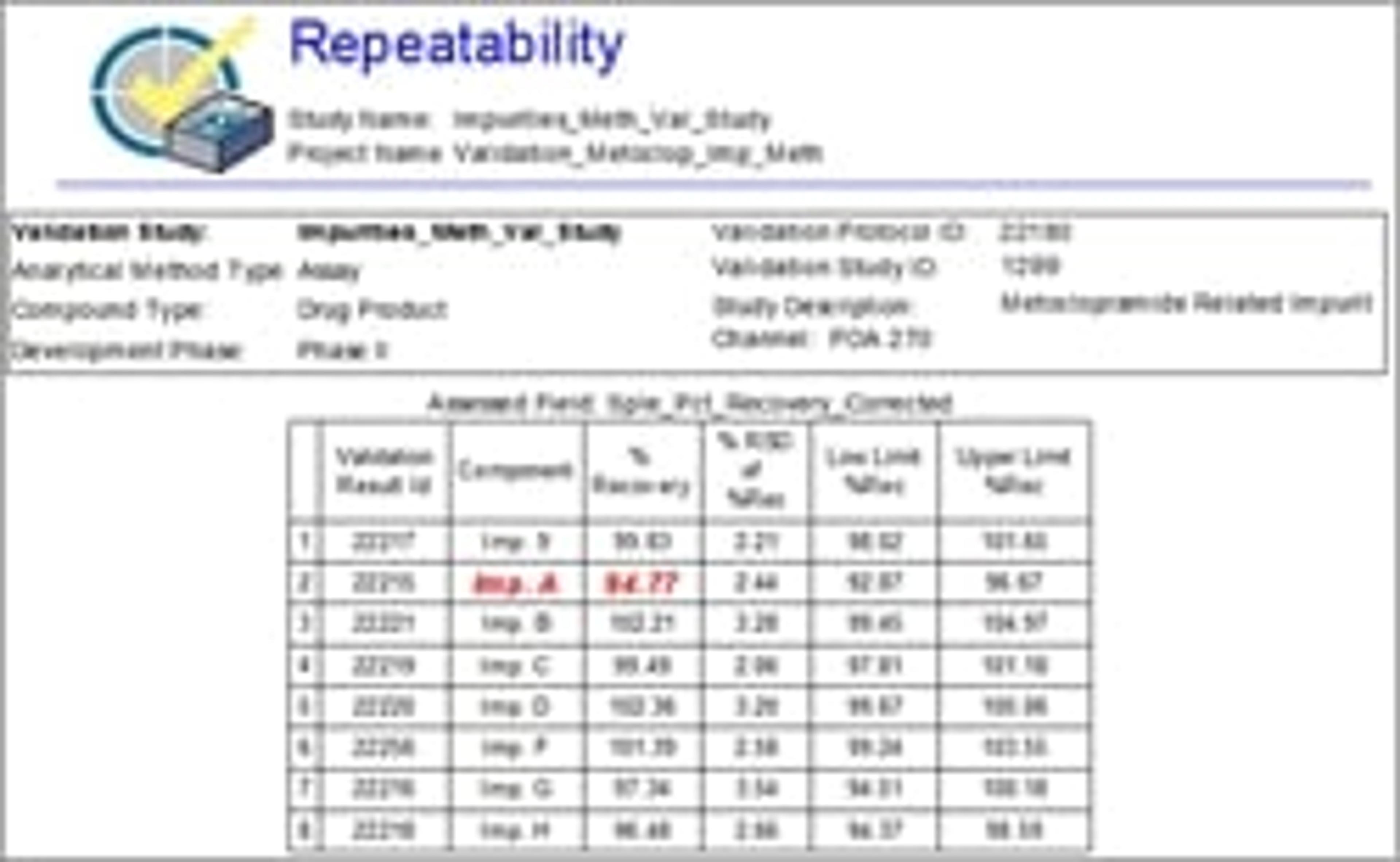Webinar Highlights: Developing Analytical Chromatographic Methods for Pharmaceutical Storage Stability Investigations
Chromatographic method development factors, parameters and strategies
10 Feb 2017

Chromatographic method development factors, parameters and strategies

Thomas Swann Principal Scientist in the Technology Advancement group of Waters Corporation
An important aspect of pharmaceutical development is evaluation of a drug product's stability during storage. Such studies require a stability indicating method capable of measuring both the drug and the degradants that may arise during storage stability investigations. Achieving sufficient method selectivity, accuracy and precision for the various analytes potentially present can be challenging. In this webinar, Dr Thomas Swann, Principal Scientist in the Technology Advancement group of Waters Corporation, will discuss:
- Instrument and study considerations when developing stability indicating chromatographic methods
- Chromatographic method development factors, parameters and strategies
- A chromatographic method development case study using a Quality by Design (QbD) approach
Read on for highlights from the Q&A session or watch the webinar on demand here.
Q: How many columns do you recommend for a typical screen?
A: As I work for Waters I might say ‘as many as you could possibly afford’ but that would be a silly answer! I would personally recommend three: A C18 and two others. I’ve used as many as 6 for more difficult situations. Sometimes I’ll do it all at once, sometimes I’ll do it as a more of a tiered screen for the first three. Generally, I’d recommend somewhere in the range of three to six.
Q: Besides C18, what column chemistries have you found useful in method development?
A: I also really like both Shield RP18 columns, which has an embedded polar group, and phenyl columns which allow pi-pi interactions. Beyond that it gets down to the specifics of what I might believe would be more appropriate based on my knowledge of the analytes. I sometimes use cyano columns for special cases. But C18, Shield RP18 and phenyl columns are my top three choices.
Q: Can the Fusion software consider methanol and acetonitrile mixtures?
A: Absolutely. Methanol and acetonitrile are traditionally considered as categorical. You can blend them but you cannot change their nature. I’ve done a lot of work in other contexts with mixed solvents and it’s quite a profitable area. Its more complex and it’s something that people often don’t think about. When you are using Fusion, you can specify a blend range and it will create the appropriate methods for Empower to execute the experiments. It’s not the first thing that people think of but it’s absolutely something that you can do.
Q: When two analyte peaks come close to each or are not separated, what is the corrective factor for this? Also, if the peak shape is broad, what is the corrective factor to maintain its shape?
A: When they are close together, it’s a selectivity problem so you have to reach for one of your levers. You are changing the column, you are changing the pH, you are changing the strong solvent or maybe you are changing one of the lesser factors. Basically, you have to do something to alter the selectivity and bring about differences in the interaction between analytes and the stationary phase. For peak shapes issues, it’s typically a pH problem. Possibly you are working at a pH too close to the pKa of the molecule in question, so you have to move the pH a couple of pKa units away from that to make sure the compound is either completely charged or completely neutral.
Q: Have you seen any stability indicating methods using SFC, HILIC or Chiral Normal Phase Chromatography used in regulatory fillings?
A: I personally have not. I’ve seen it advocated however, both in the general community of practitioners as well as within companies like Waters.
Q: What is the best new chemical entity sample to start initial method development or column mobile phase screening in early clinical development, if cocktails or impurities and product reference materials are not available?
A: I’m not entirely sure how to interpret this question. I’m assuming it’s a case where one has access to new chemical entity but not necessarily anything else. I would say in this situation you really have to do one or more force degradation studies. They are not hard to do but you have to think about how you want to do it. You have to know about the structure, in terms of its propensity to degrade. So you might need to know for example whether it is oxidatively or thermally labile. You have to generate the degradants to do method development. The business about whether or not you have authentic standards is less problematic because once you are equipped with an instrument like the QDA, which I highly recommend, you may be able to figure that out by looking at the mass spectral data. But let’s say the mass spec is helping you a bit but you can’t identify all of them, which is often the case, that is still ok, you can still get a feel for what is going on. You can look for co-elutes, you can track by the ions you do observe etc. You can get a lot done without the authentic standards.
Q: Will there be a method development seminar about large molecules such as monoclonal antibodies’ stability indicating assay development using Waters, UPLC approaches.
A: That’s a good idea. I don’t know if we are applying that or not. Waters is a big company and its possible that somebody is working on that, though I personally am not.
Q: Will you be able to use the new peak tracking feature in Empower using QDA data?
A: The short answer is, I did use that and it is useful so I do like it. But the concern there is that Fusion cannot yet make use of it. There is some discussion as to enabling it to do that in the future but it does not exist in Fusion yet.
Q: Do you screen flow rate?
A: I typically do not screen flow rate a great deal. Flow rate optimization is important if you want the maximum efficiency so there is value in doing that. However, often I am willing to trade off some efficiency for speed which leads me to use higher the flow rates. With modern materials, the Van Deemter curve tends to flatter, especially as you go into smaller particles. This is especially true if you are using a solid core particle so there is less of a trade-off of efficiency for speed.
Q: When choosing pH, do you have to select the pH based on the least stable column or can you exclude the runs that are not practically feasible and still give you a good model?
A: Well the short answer is, yes, you can do both. You can certainly limit yourself to the pH range of the least stable columns and sometimes I have done that. Usually I have some reason to believe that I don’t need to access where the columns can’t go, which was the case here. However, if I’m setting up a broader screen and I want to look in a wider pH range then either, I manually configure my methods it so that those less stable columns don’t get into an inaccessible high pH region, or I would instruct Fusion the same thing for me. If you tell Fusion that the pH limit for a particular column is 8 and you do a pH screen up to 10, it will lock out that column for pHs above 8 and it will not create any methods that damage that column. It’s very smart in that regard.
Q: What approach would you take if you have both polar and non-polar analytes?
A: That’s a really good question. It’s tricky because reverse phase doesn’t deal well with polar compounds. It’s really a case of opening up your chromatographic window. I would try to use something maybe like a shield RP18 so it’s got some better polar capabilities but it’s got hydrophobicity like a C18 as well. I would also try T3 since it allows additional polar interactions with the base particle but still has hydrophobic C18 chemistry. I guess worst case scenario is you do two passes under different conditions. That is sub-optimal, nobody wants to do two analysis, but it is sometimes necessary.



